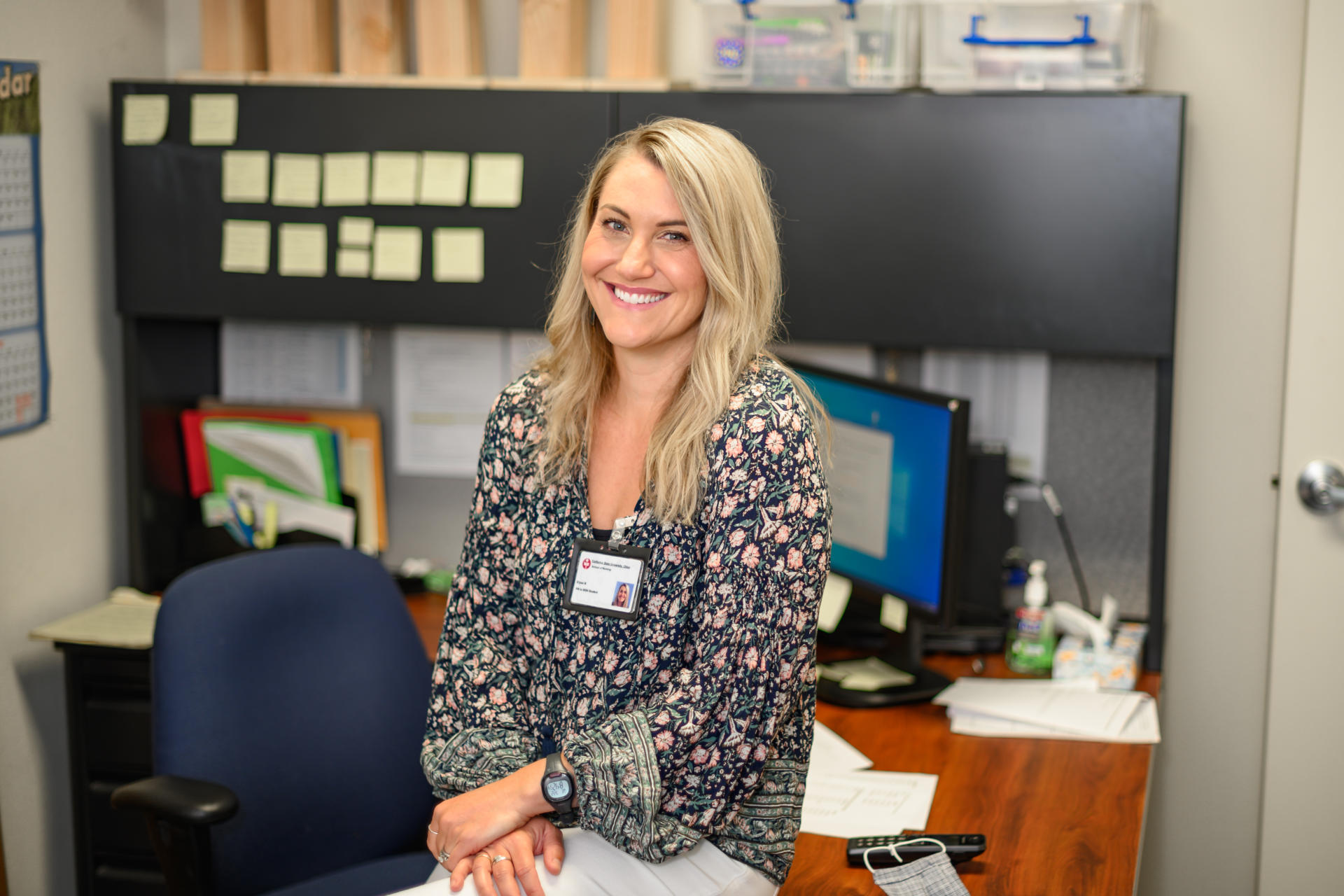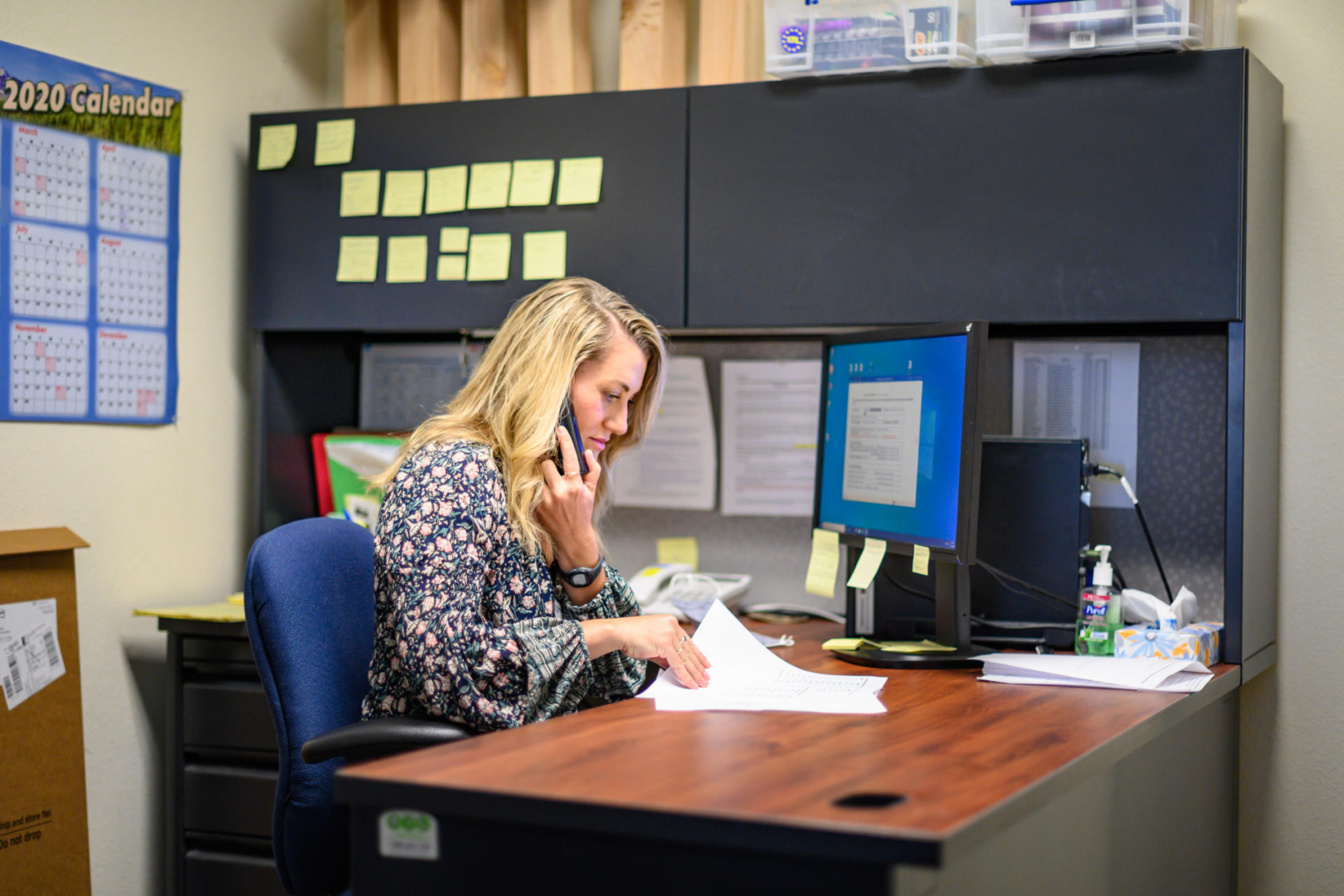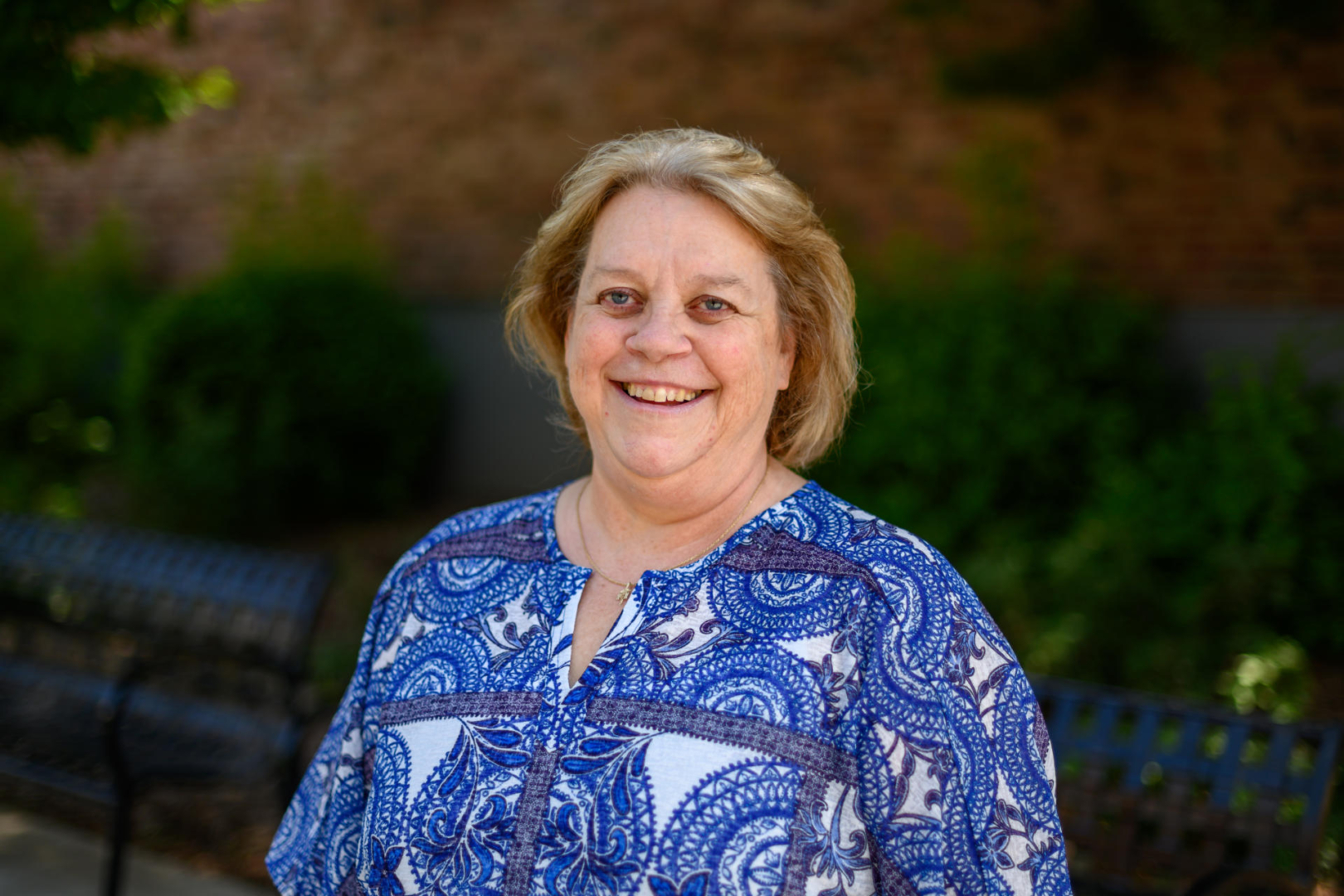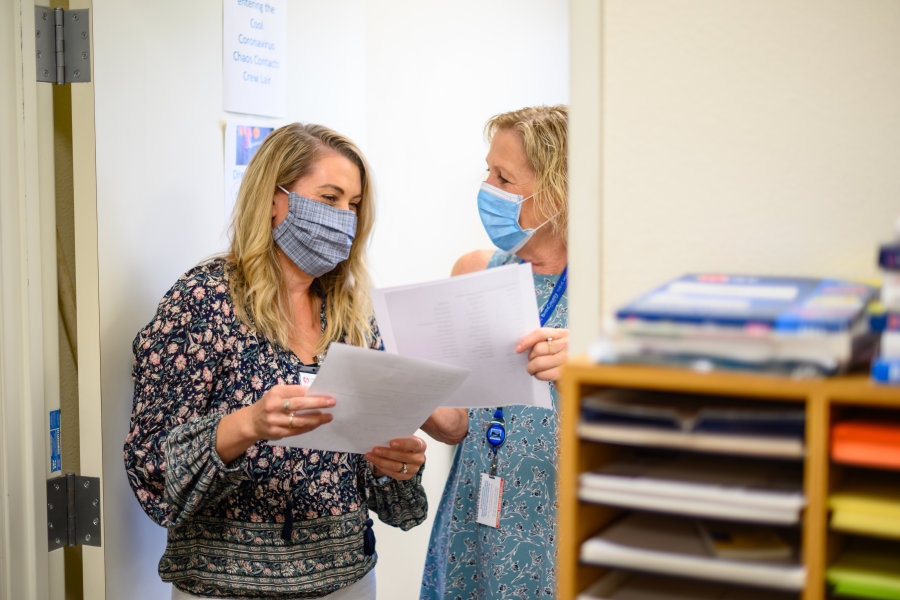Nursing Students Tackle COVID-19 Contact Tracing

Elyse Fontana has been working on COVID-19 (coronavirus) contact tracing efforts with the Butte County Public Health office on Wednesday, July 22, 2020 in Chico, Calif. (Jason Halley/University Photographer/CSU, Chico)
Sherron Prosser was growing concerned.
As faculty in the School of Nursing, she had been contacting agencies from around the state, to see where to place her online RN to BSN program students to satisfy their required 50 hours of clinical public health work—the final summer push before the registered nurses earn their bachelor’s degree in August.
This year, though, the COVID-19 pandemic had closed doors everywhere.
“A lot of agencies said they’re not taking students right now and not taking interns or using volunteers,” said Prosser (Nursing, ’01; MS, Nursing, ’18). “They’re saying, ‘sorry, thank you, try us next time.’”
With time running out and students counting on the University to help them fulfill their graduation requirements, Prosser learned about free contact tracing training through the Association of State and Territorial Health Officers. Witnessing an urgent and growing need for contact tracers statewide because of the unrelenting spread of the coronavirus—and students in need of clinical public health work—Prosser seized her opportunity.
“I thought, if we could get the students to do this training, that would be a little carrot to dangle in front of these agencies so I could say, ‘I have contact tracers that are trained for you,’” Prosser said. “And it worked.”

With her students trained as contact tracers, Prosser successfully placed them into numerous state agencies, including six at the Butte County Public Health Department’s Chico and Oroville offices. Other students are at agencies ranging from Humboldt and Los Angeles Counties to Sacramento and Tuolumne Counties.
A vital part of public health work, contact tracing is the practice of informing individuals when they are believed to have been exposed to a contagious disease. It is a process that takes time, has clear steps, and requires an approach that’s both direct and delicate.
Spreading her 50 hours as a contact tracer over approximately six weeks, nursing student Elyse Fontana said she has found the work “incredibly interesting.”
“It’s been extremely eye opening to be behind the scenes and see just how quickly COVID-19 is spreading in Butte County,” said Fontana (Exercise Physiology, ’08). “I have been met with people thanking me for doing this work, and I have been met with very little resistance.”
Amid today’s global pandemic, the tasks of a contact tracer start by communicating with an individual who has tested positive for COVID-19, known as the “person under investigation” (PUI). After interviewing the PUI, the contact tracer builds a list of people they were in contact with during a certain timeline—and who may have been exposed to the virus. They then reach out to those on the contact list to let them know they were exposed. For both groups, contact tracers provide quarantine instructions, guidelines, and recommendations.
This can be a tricky. While most contacts welcome and accept quarantine guidelines, others are guided by anxiety and not always so agreeable. But Fontana said that engaging in patient, therapeutic conversations seems to quell any unease.

“We voice that these are strictly guidelines and recommendations—we are not the COVID-19 quarantining police,” she said. “I throw that out there, and I think that helps gain a lot of trust. You’re not sitting there as an authoritative figure trying to make someone do something.”
Finally, contact tracers monitor the PUI and contacts and recommend quarantine instructions to prevent further possible spread. If those under quarantine require help—getting groceries or filling medications, for example—the Butte County Public Health Department aids in tackling these tasks.
“I am extremely appreciative of public health nurses,” Fontana said. “I really find them underappreciated, I don’t think the public realizes how hard they work and what they do.”
Already working as an obstetrics and labor and delivery nurse at Oroville Hospital, Fontana finds contact tracing rewarding because she is playing an essential role in educating her community with the goal of keeping them safe and healthy.
“This is literally a way to limit exposure, which limits new cases,” she said. “Once people are aware that they could be carrying this thing around and spreading it, then you’re able to give them recommendations and guidelines. Education and knowledge are power.”

Monica Soderstrom, Community Health Division director for the Butte County Public Health Department, said the office is grateful that the nursing students are helping slow the spread of COVID-19.
“They have been a tremendous help in our efforts, and it has given us an opportunity to show them the importance of public health’s essential role in a pandemic response,” she said.
Prosser expresses her own gratitude to partnering agencies like Enloe Medical Center and Fremont Rideout Outpatient Services (part of Adventist Health in Yuba City) for accepting Chico State nursing students—especially in these times of virtual learning.
“Nursing is not a distance education. You can’t learn and do this remotely,” said Prosser, herself a public health nurse for 12 years at the Butte County Public Health Department. “We’re very appreciative of that fact because you can only do so much on Zoom and patient care nursing is a work of heart—we do that at the bedside, not on Zoom.”
As for contact tracers like Fontana, they are simply doing their job, protecting and educating the community.
“Contact tracers and public health are truly trying to help people, it’s not something to shy away from or be scared about,” Fontana said. “People still have their autonomy, we’re not trying to take that away. We’re just trying to stop the spread of the coronavirus. Because it’s real, [and the] science is real.”


